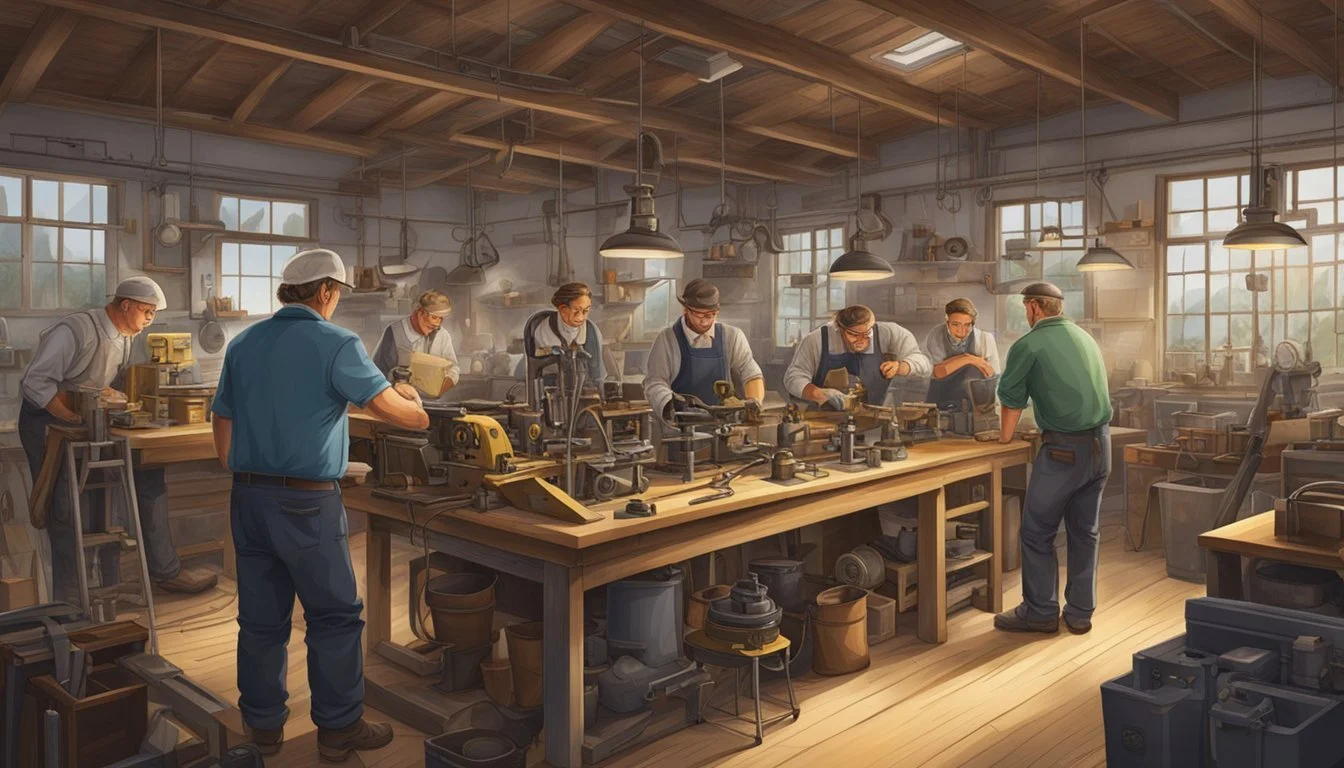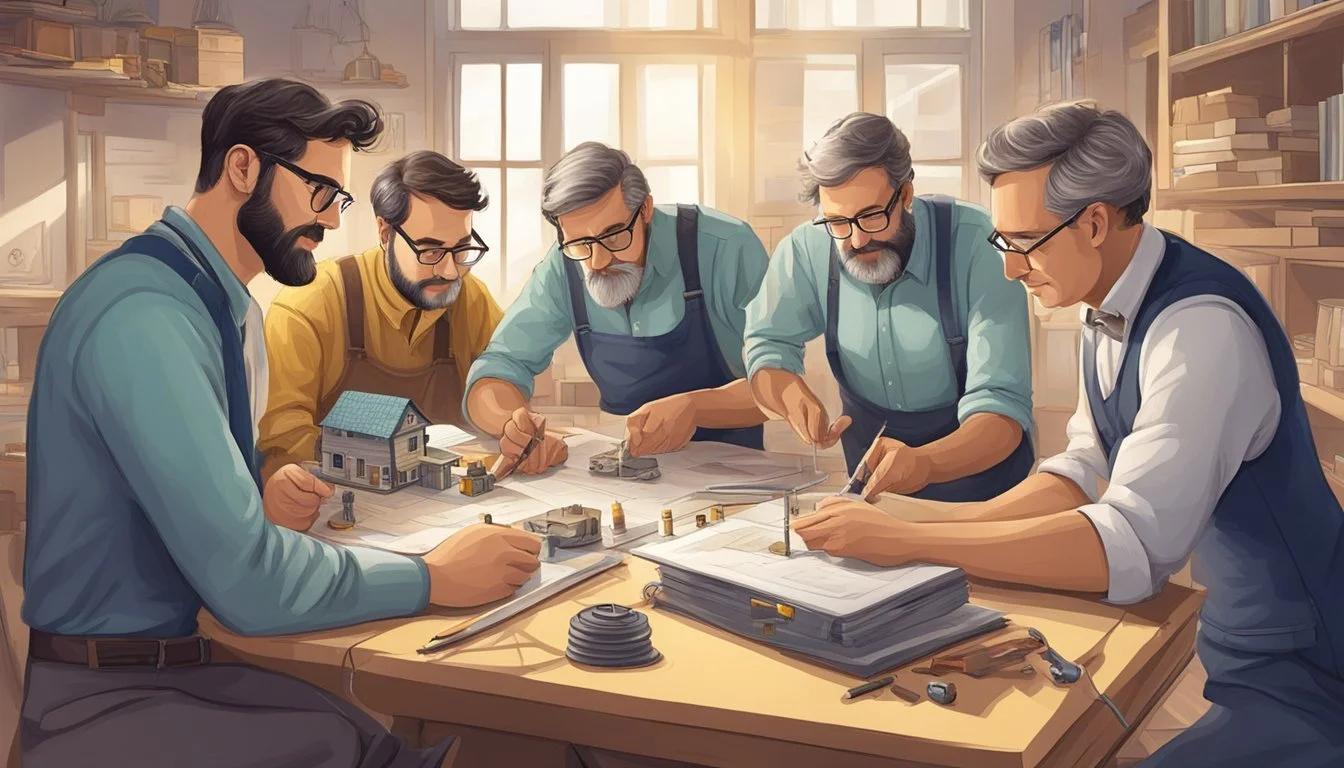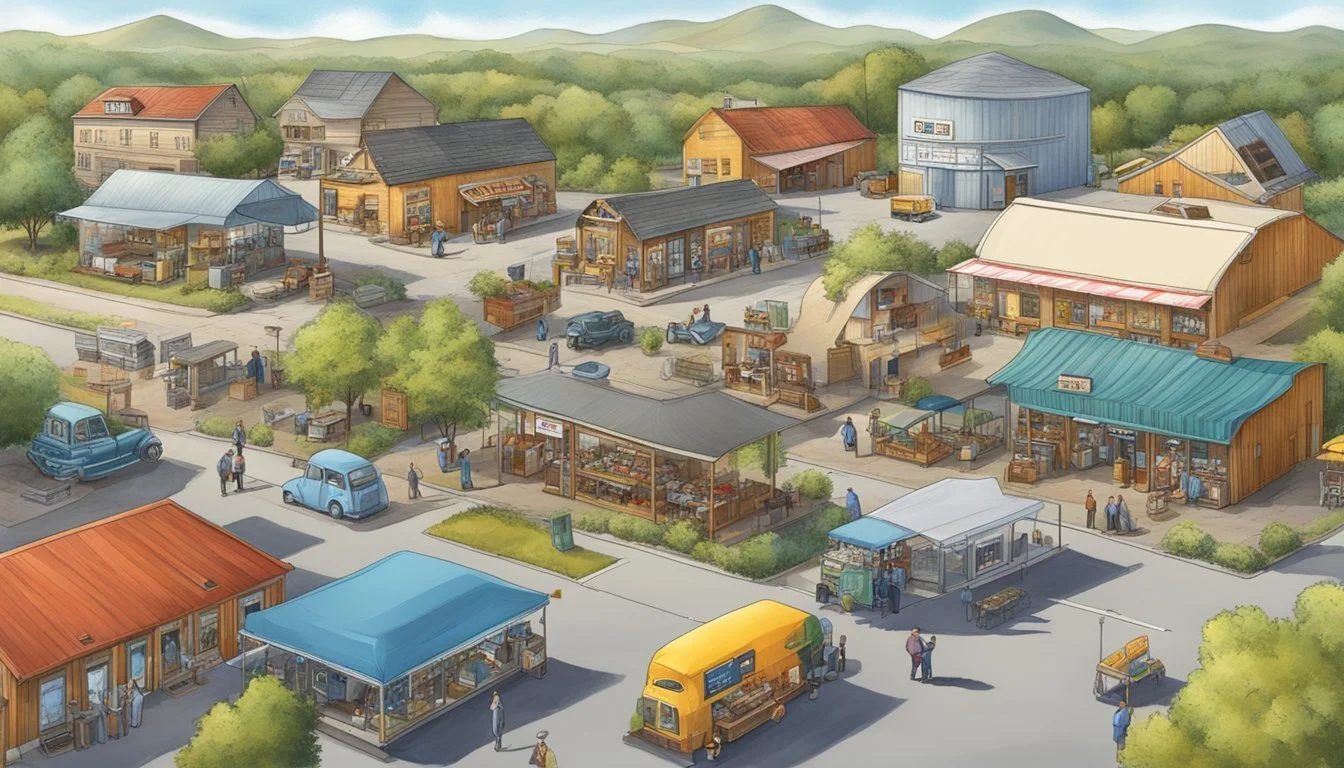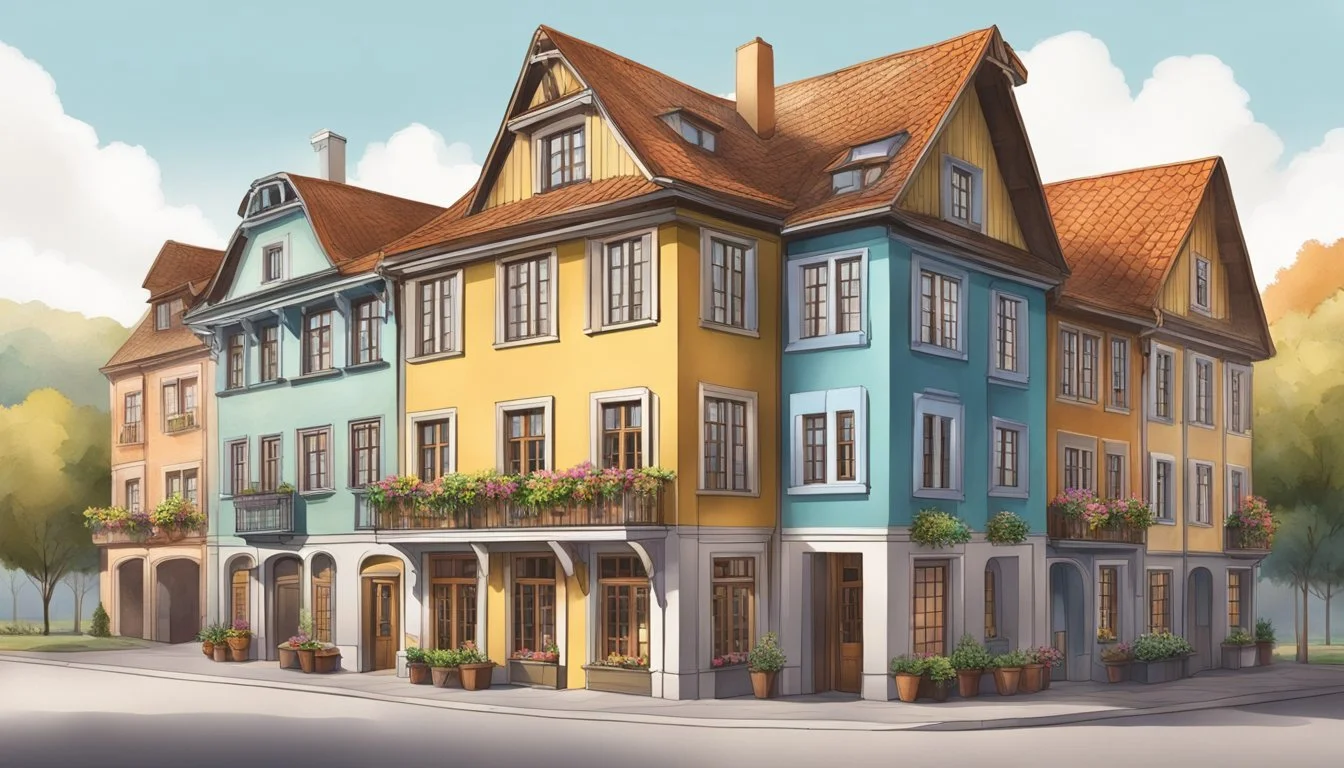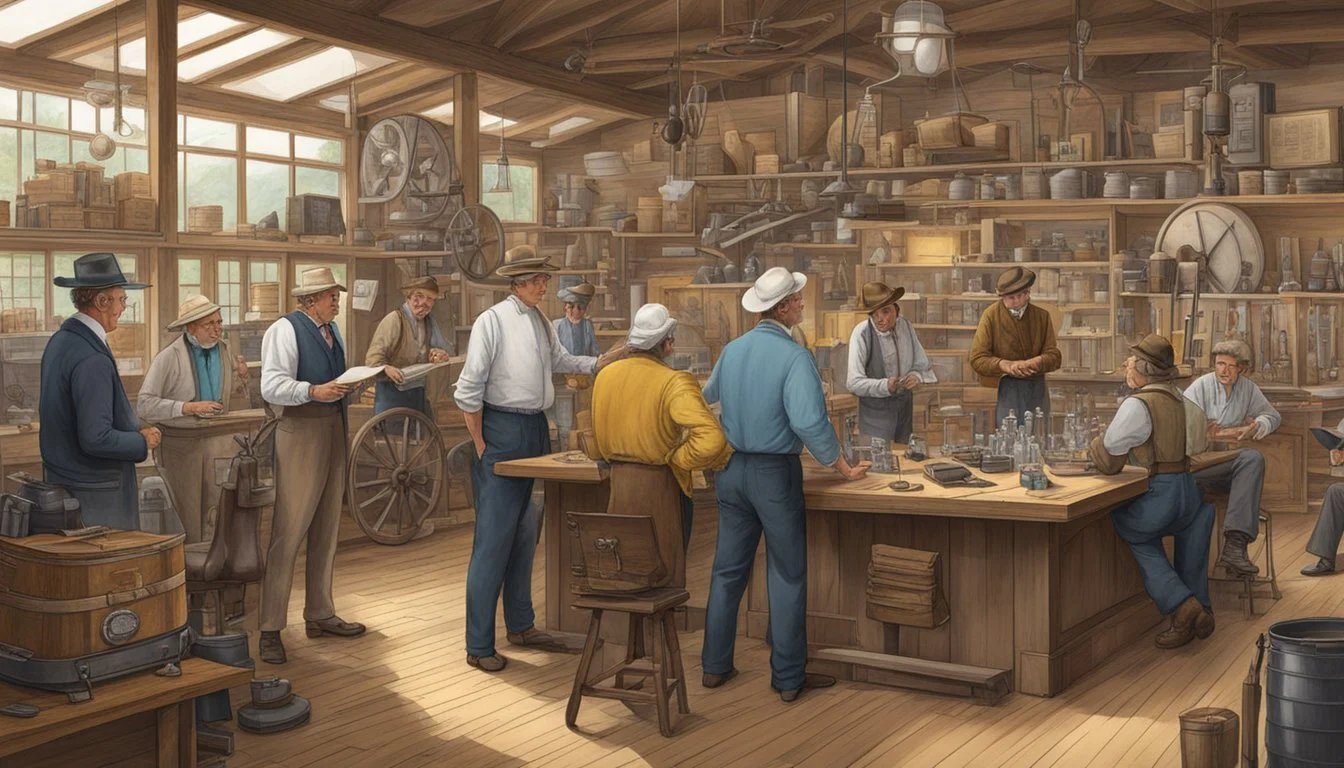German Texan Inventors and Entrepreneurs
Pioneering Contributions to Industry
The intertwining of German heritage with Texan history is quite prominent, particularly when it comes to the legacy of innovation and entrepreneurship. In the mid-19th century, Texas saw a significant influx of German immigrants. These industrious settlers contributed vastly to the state's development, resulting in a unique subculture known as German Texans. They brought with them a strong work ethic, a rich cultural heritage, and a propensity for invention and commerce. Central Texas, including areas such as New Braunfels and Fredericksburg, became hubs for German Texan communities where their influence is still observed today.
Among these immigrants were notable inventors and business pioneers who left indelible marks on the state's and the nation’s technological and economic landscapes. The inventive spirit of German Texans gave rise to contributions in diverse domains, from rocket engine research to the retail industry. For instance, figures like Hugo Schmeltzer exemplify the entrepreneurial spirit by establishing significant business ventures that also served as community focal points, reinforcing the social fabric and fostering the growth of Texan cities.
German Texan inventors have also made their mark on broader technological advances, reflecting the innovative drive that characterizes German contributions worldwide. Their legacy is not only etched in the history of Texas but also in the technological progress that shapes modern society. This heritage of creativity and entrepreneurship continues to underline the German influence on Texas’s advancement, enriching its culture and bolstering its economy.
Historical Context
This section delves into the influx of German immigrants to Texas, their societal organization, and the transformations within the German Texan community during the World Wars. The narrative that unfolds is one of perseverance, adaptation, and lasting impact on the region's development.
Early German Immigration to Texas
German immigration to Texas began in earnest in the early 19th century, fueled by political and economic pressures in their homeland. Johann Friedrich Ernst was the first German settler in Texas, arriving in 1831. The significant wave, however, started when the Adelsverein, also known as the Society for the Protection of German Immigrants in Texas, was formed in 1842. Led by Prince Carl of Solms-Braunfels, this society aimed to establish new territories for Germans in the young Republic of Texas. John O. Meusebach, the successor to Prince Carl, further orchestrated the settlement efforts.
Major Settlements and Societies
New Braunfels and Fredericksburg were among the most notable German settlements in Texas. New Braunfels was founded by Prince Carl of Solms-Braunfels in 1845, and it quickly became a flourishing hub for German culture in Texas. Fredericksburg, established by John O. Meusebach in 1846, followed suit and played a vital role in preserving the German heritage.
Central Texas became synonymous with German Texan culture, with towns like Boerne—named after the German author Ludwig Börne—showcasing unique architectural and cultural influences.
These communities formed tightly knit societies, with the German-Texan Heritage Society emerging as a guardian of their rich cultural legacy.
Effects of World Wars on German Texan Community
During World War I, Texas was home to a large population of German immigrants, which led to an upsurge in anti-German sentiment. Many German Texans faced cultural suppression, with German-language publications and the teaching of the German language being severely diminished.
The onset of World War II further intensified the scrutiny and challenges faced by the German Texan community. Despite these adversities, German Texans continued to contribute extensively to the state in various occupations, demonstrating resilience and integration into the broader Texan ethos. Their experiences during these global conflicts marked a transformative period in the history of German Texans, shaping the community's identity and role within the fabric of the United States.
Cultural Contributions
German Texans have profoundly impacted the cultural landscape of Texas by preserving their rich heritage through language, festivals, gastronomy, and entertainment. Their continued influence reflects a commitment to cultural diversity and enrichment within Texas.
Language and Dialects
German immigrants in Texas nurtured a unique dialect known as Texas German, distinct from the German spoken in their homeland. This linguistic treasure has become a subject of interest among linguists, who strive to study and preserve it as a significant part of the state's cultural heritage.
Traditions and Celebrations
Festivals like Oktoberfest, Saengerfest, and Wurstfest stand testament to the German Texans' dedication to upholding German traditions. These events provide immersive experiences with authentic music, dance, and camaraderie, encouraging cultural exchange and community engagement.
Oktoberfest: A classic Bavarian festival celebrated with live music, traditional costumes, and folk dances.
Saengerfest: A gathering that showcases German choral music, reinforcing the community's connection to their ancestral tuneful traditions.
Wurstfest: A 10-day festival held in New Braunfels, drawing over 100,000 visitors to honor German food, particularly sausages, and beer.
Food and Cuisine
German cuisine (What Wine Pairs Perfectly With German Cuisine) has left an indelible mark on Texan food culture, with Texas barbecue adopting techniques and flavors from German culinary practices. Sausages and sauerkraut are staples at local food venues, illustrating the fusion of German and Texan tastes.
Texas Barbecue: Often includes sausages with a German twist in the seasoning and cooking method.
Sauerkraut: Fermented cabbage that accompanies various dishes, adding a touch of German flavor.
Music and Entertainment
Music is a cornerstone of German culture, with Texas Germans contributing significantly to the state's musical diversity. Polka bands and oompah music are often the heart of German-Texan festivities, ensuring the heritage is vibrantly preserved and celebrated.
Polka Bands: Perform lively dance music that has become a part of the Texan musical landscape.
Oompah Music: Traditional German-style bands are a common feature at celebrations, adding an authentic soundtrack to festivities.
Economic Impact and Contributions
German Texan inventors and entrepreneurs have significantly impacted the Texas economy, particularly through agricultural advancements and industrial development. Their contributions have helped shape the economic landscape of Texas Hill Country and beyond.
Agricultural Advancements
German migrants brought with them farming techniques and systems that were particularly well-suited to the Texas environment. They were adept at dry-land farming, allowing them to cultivate Texas Hill Country's challenging terrain. Ranching also became a cornerstone of economic success with German Texans at the helm. They introduced rigorous practices in livestock management, which improved cattle breeds and productivity.
Livestock Breeding: Improved cattle breeds for better meat and dairy production.
Agricultural Techniques: Introduced dry-land farming and crop rotation.
Industrial and Technological Development
With the rise of railroads, German Texans like Hugo Schmeltzer capitalized on this new era of connectivity. Schmeltzer's mercantile business thrived by utilizing railroad lines to distribute goods across Texas, thus spurring local economic growth. The establishment and success of such enterprises underpinned the industrialization of Texas. German Texans were also pivotal in introducing technological innovations in various fields, further solidifying their role in the state's economic expansion.
Railroads: They used rail networks to expand the reach of businesses like Schmeltzer’s mercantile enterprise.
Mercantile Influence: German Texan merchants established businesses that became community hubs, influencing local economies and culture.
Architectural Influence
German settlers in Texas brought their distinct architectural styles and practices, integrating them into the local landscape, profoundly affecting residential and community structures, as well as giving rise to historic venues that still stand today.
Residential and Community Structures
German immigrants in Texas adapted traditional architectural techniques to the Texan environment, leading to unique structural styles that are evident in various regions, including the Texas Hill Country. Fachwerk construction, a German method involving timber framing with infill, became a hallmark of German-Texan houses. The style is characterized by its sturdy construction and the ability to keep homes cool in the scorching Texas heat.
In residential architecture, German influence often appears in the form of decor and furniture, showcasing a blend of German craftsmanship and Texan materials. German settlers also influenced the layout and design of communities, contributing to communal facilities such as schools, with the German Free School in Austin being a notable example of their dedication to education and community development.
Historic German-Texan Venues
Iconic German-Texan venues serve as embodiments of the cultural fusion between German settlers and Texan society. Scholz Garten in Austin, established in 1866, is the oldest continually operating beer garden in America, reflecting the German tradition of communal socializing around food and drink.
Another prominent venue is the Saengerrunde Hall, which continues to serve as a center for cultural events and continues to preserve German heritage in Texas. Additionally, the King William district in San Antonio is recognized for its concentration of German-Texan architecture, showcasing renovated historic homes that display unique characteristics of German craftsmanship adapted to the Texan surroundings. These venues and regions not only highlight the architectural influence but also serve as custodians of German culture in Texas.
Notable German-Texan Figures
German-Texans have left an indelible mark on Texas through their pioneering spirit and entrepreneurial endeavors. From the founding of towns to the inception of unique businesses, these figures have been instrumental in shaping the Texan landscape.
Pioneers and Founding Personalities
Johann Friedrich Ernst: Often regarded as the "Father of German Immigration to Texas," Ernst settled in Texas in the 1830s, laying the groundwork for future German settlements.
John O. Meusebach: Founder of Fredericksburg and signer of a notable peace treaty with the Comanche, he was crucial in establishing a German presence in central Texas.
Prince Carl of Solms-Braunfels: His leadership led to the founding of New Braunfels, growing the German influence and heritage in Texas.
Influential Inventors and Entrepreneurs
German-Texan farmers: They introduced advanced agricultural practices and equipment to Texas, significantly improving the farming industry.
Business leaders in central Texas: Key figures among the German-Texans in towns like Fredericksburg contributed to the commercial development with establishments that catered to the unique blend of German-Texan culture.
Current Affairs and Legacy
The German-Texan legacy continues to thrive through educational initiatives and cultural celebrations that attract both locals and tourists. These endeavors ensure the enduring presence of German heritage in Texas.
Education and Preservation of Heritage
The German-Texan Heritage Society plays a critical role in maintaining German culture in Texas. It partners with academic institutions, such as the University of Texas at Austin, to promote the study of German Texan history. This synergy supports a variety of educational programs focusing on the German language and history. They bolster scholastic efforts in preserving the rich tapestry of German-Texan culture for future generations.
Tourism and Modern Cultural Festivities
Cities like Fredericksburg and New Braunfels remain at the heart of tourism tied to German Texan heritage. Annual events, such as Oktoberfest and Wurstfest, draw thousands of tourists eager to experience traditional music, dance, and cuisine. These festivals not only celebrate the past but also keep the spirit of German culture vibrant in the present. The ongoing popularity of these events highlights the significant influence of German customs on the local Texas community.
Online Resources and Further Reading
In exploring the contributions of German Texan inventors and entrepreneurs, several online resources offer invaluable information. These digital platforms provide access to historical documents, records of German Texan achievements, and insights into their lasting impact on Texas’s economy and culture.
Digital Archives and Databases
The Handbook of Texas Online: This is a digital state encyclopedia developed by the Texas State Historical Association (TSHA) that offers articles on significant German Texan figures and their contributions. The resource is meticulous in its historical narration.
Website: The Handbook of Texas Online
Relevance: Provides biographies and context for the impact of German Texans.
Wikipedia: While maintaining a broad scope, Wikipedia can offer a starting point for researching individual inventors and entrepreneurs of German Texan history.
Website: Wikipedia
Notable Entries: Search for specific inventors or business figures to gather preliminary information.
Texas German Dialect Project (TGDP): Launched to preserve the language and cultural history of Texas Germans, TGDP offers insights into the lives and stories of German settlers and their descendants in Texas.
Website: Texas German Dialect Project
Significance: Focuses on the preservation of the cultural and linguistic heritage of German Texans.

